#alienor of aquitaine
Explore tagged Tumblr posts
Text
#booklr#books#alienor of aquitaine#eleanor of aquitaine#henry ii#Henry III#Edward I#Edward II#Edward III#John#the black prince#edward iv#Richard II#richard iii
3 notes
·
View notes
Text

From Eleanor of Aquitaine 's letters to Celestine III. Reading this paper analyzing the literary constructions and tropes she (or at least, her scribe Peter of Blois) utilizes rhetorically to try to persuade the Pope. It's about playing into the expectations and roles both of the "passive" grieving mother but also referencing the active Mary-As-Intercessor to solve her son's plight.
Also the Richard babyboyification is great in this. I get the rhetorical reason but also this is how I feel all the time

Article is "Motherly Devotion and Fatherly Obligation: Eleanor of Aquitaine’s Letters to Pope Celestine III" by Rachel F. Stapleton.
#richard the lionheart#eleanor of aquitaine#alienor d'aquitaine#12th century#Pope Celestine III#history stuffs#the Plantagenets#angevin empire
12 notes
·
View notes
Text
Review: Queens of the Crusades – by Alison Weir
I had previously read Alison Weir’s most excellent book specifically on Queen Eleanor of Aquitaine many years ago so the author was familiar to me. I chanced upon this title in my local library (Caldicot) and thought I’d give it a go. It covers the lives of several British Queens, or rather the historical period in England during which they lived. The period is one of the most interesting…

View On WordPress
#1215#Alienor of Provence#Alison Weir#Aquitaine#barons#battle#Berengeria of Navarre#British Empire#British Hostory#British Queens#Brittany#Caernarfon#Caernarfon Castle#Caldicot#cardiff#Chepstow#consanguinity#Constantinople#constitution#Continental Europe#Cross#dominions#Edward I#Ekleanor of Castile#Eleanor of Aquitaine#English Queens#europe#European Royal#france#French
7 notes
·
View notes
Note
Hi, hello, french art historian here (I apologize in advance for any mistakes). There is no credible written sources, nor any physical description of Alienor dating from the Middle Ages that could help us know what she truly looked like.
However there are a few representations of her that we know for sure to be of Alienor (more like 90% sure, but it’s more than enough).
The first one does not tell us much, it’s from a stained glass in the Cathedral of St Peter in Poitiers (France). The Cathedral was build upon the orders of Alienor and Henry II, therefore they are both represented on the Crucifixion Window.

As you can see, it’s not very helpful because it’s quite simplistic. However, it seems we can notice a glimpse of wavy hair on the side of her forehead. It seems to be light brown, especially in contrast of Henry II, whose hair is pretty dark. That’s interesting because based on what we know, Henry II was a ginger and he had freckles, that would mean that they didn’t get his hair color right. At the same time, other characters on this stained glass (which are not in this picture) have blond hair, which indicate that the light brown and dark brown hair were wanted features… It’s important to note that this representation of Alienor and Henry II was made when they were both alive. Could it be that they were trying to show auburn hair but couldn’t ? This part of the stained glass is pretty dark, so it’s not out of the question.
The second representation is from Sainte-Radegonde Chapel in Chinon (France), which is partly hewn into the rock, and centred around the tomb of a 6th-century religious hermit. In this Chapel there are mural paintings dating from the late 12th-century.

Notice the crowns ? They’re the same as Henry’s on the stained glass. Between that and the place, we’re pretty sure this painting shows Alienor, Henry and their childrens, Richard, John and Joan.
It’s a bit tricky because all colors look the same if you’re not very attentive. However, if you look closely, you might notice that Henry does look ginger. Richard looks ginger too, and it is said by some written sources that he had red hair (red and gold, which would indicate a true ginger, like his father), so it’s nor far fetched. John is the most interesting I think, because he has blond hair. He is also depicted as having blond hair in an illuminated sketch dating from a century after his death. It’s interesting because a few written sources say that he had dark red hair, probably auburn. Perhaps his hair darkened with time and went from strawberry blond to auburn ? Their sister is said to have had brown hair, with red highlights, which would’ve probably meant her hair was auburn too. Joan and Alienor does seems to have the darkest hair of the bunch in this painting. Auburn seems to make sense, or perhaps even light brown. Their faces are elongated in comparison to the men.
Lastly the reclining effigies of Alienor and Henry II in the Abbey of Fontevraud (France). This one doesn’t tell us much I think, except that Alienor might have had an elongated face (again). However, elongated faces were the beauty cannon during the Middle Ages, therefore she might have been sublimated to conform to this beauty cannon. She does look tall, which is something that was written a few times about her. But she was a strong woman, with a strong personality, so maybe she looked tall metaphorically, rather than physically ? Who’s to say.

Based on all of this, you can make your assumptions on what she looked like. I’d say light brown hair or auburn (brown hair being a dominant trait, I highly doubt that she would have had dark hair, true brown or black, since all of their childrens had somewhat red hair) tall and light skin. As for the eyes, we have absolutely no ideas.
Do we have any clue about Eleanor of Aquitaine's physical, like, hair color, height, eye color...???
it's been a hot minute since i last did a deep dive but i don't think any credible source ever commented on it, probably bc she walked around with her head covered as was the fashion of the time
#took way to much time writting this when i have my internship paper to submit friday#anyway#here goes nothing#alienor d’aquitaine#eleanor of aquitaine#history#art history
2 notes
·
View notes
Photo
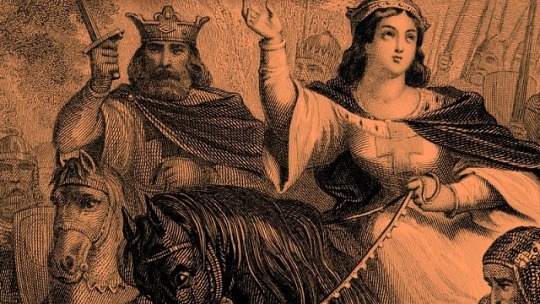
OUVRAGE | Aliénor d'Aquitaine, par Philippe Tourault ➽ https://tinyurl.com/Ouvrage-Alienor-Aquitaine Aliénor d'Aquitaine est une héroïne, une vraie. On ne compte plus les films, documentaires, biographies, romans ou encore bandes dessinées qui la mettent à l'honneur. Mais comment pourrait-il en être autrement avec un tel destin ?
8 notes
·
View notes
Text
Arthurian myth: Merlin (2)
A continuation of the loose translation of the "Merlin" article by Yves Vadé for the "Dictionnaire des Mythes Littéraires".
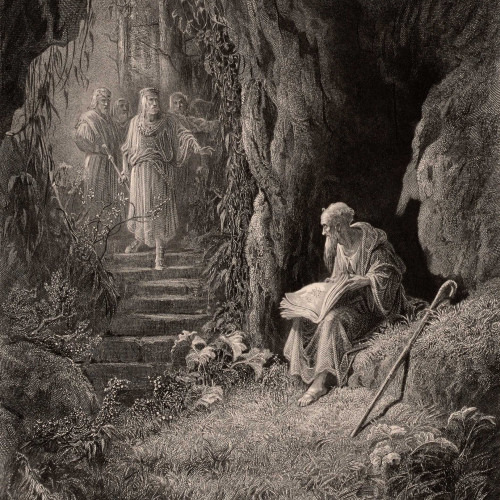
II/ Merlin in the Arthurian literature
As early as 1155, the Normand writer Wace transposed, for Alienor of Aquitaine, the “Historia Regum Britanniae” in French verse, in his “Roman de Brut”. He adds to the work the episode of the creation of the Round Table by Arthur, of whom Merlin will later become the prophet and the agent.
Merlin was barely mentioned by Chrétien de Troyes ; it is with Robert de Boron that he truly became the inspiration of the Grail’s knighthood. His work in verse, that contained at least the three romans known as “Joseph of Arimathea”, “Merlin” and “Perceval”, is partially lost in its original version, and it maybe even was unfinished. However, the prose translation of the “Merlin” was preserved, and seems to be quite faithful to Boron’s poem. The beginning of the roman takes back the motif of Merlin being born of an incubus demon, but it is now placed within a greater theological context: the demons wishes to produce an Antichrist, born of a virgin just like the Christ, in order to counter the Holy Incarnation. A demon managed, after some difficulties, to trick an honest young girl, but she immediately confessed her sin and she had the child baptized. From his father, the devil, Merlin received the knowledge of the entire past; and to counter this gift, God gave him the power to know the future. As such, Merlin is born with an universal knowledge. He uses it in the first months of his life to save his mother, threatened with burning at the stake ; then, at seven years old, he reveals to the usurper Vertigier the existence of the two dragons hidden under the foundations of his tower. He also reveals their meaning: the red dragon (Vertigier) will be killed by the white dragon (the young princes Pendragon and Uter, sons of the king Constant). Uter became king, and Merlin his advisor. He allows him to vanquish the Saxon during the battle of Salisbury, battle where Pendragon loses his life: Merlin had Stonehenge built in his memory, and Uter ruled under the name of Uterpendragon. A new element that would change the Merlin legend forever: it is through the idea and advice of Merlin that Uterpendragon has the Table of the Grail built, the “third table” after the one of Joseph of Arimathea, which itself was a copy of the table of the Last Supper. And, just like within Geoffroy’s work, it is thanks to Merlin that Uter can give birth to Arthur by uniting himself with the duchess Ygerne, that he marries soon after. Merlin raises Arthur in secret then he ensures his crowning and his rule. Merlin will keep assisting Arthur, so that both his kingdom and Christianity could prosper.
Visibly inspired by, if not written by, Robert de Boron, the “Perceval” of the Modène and Didot manuscripts give to Merlin a peaceful end, though an enigmatic one… After guiding Perceval through his quest, he announces the end of the enchantments within the Grail Castle. Once it is done, Merlin builds himself a home in the woods called “esplumeor” (a word with an unknown meaning). There, he escapes from both the flow of time and the sight of men, but he keeps making prophecies about what God asked him to reveal to humanity.
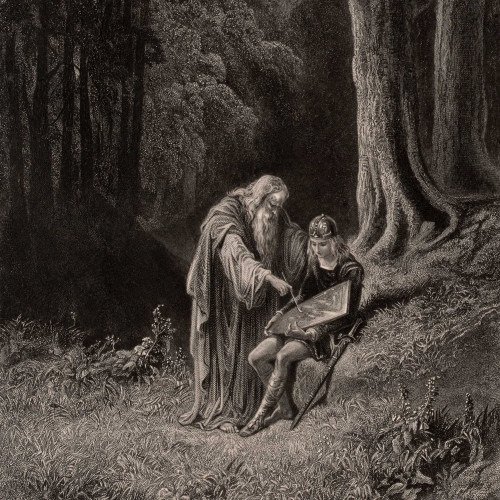
During the first half of the 13th century, two prose cycles formed themselves in France, each continuing Merlin’s story in a different way.
1) In the “Suite-Vulgate”, included within the greater cycle of the “Lancelot-Graal” or “Vulgate” (1215-1230), Merlin is the military advisor and strategist of Arthur in his battles against the barons that refuse his authority, then in his war against the Saxon, and finally in his feud against the emperor of Rome. Through Merlin, Arthur manages to marry Guenièvre, daughter of the king Laodegan, and he becomes the ruler in charge of the Round Table. But more importantly, it is here that Merlin encounters Viviane, the daughter of a lord named Dionas, at the edge of a fountain in the forest of Brocéliande. Wrapped around the tales of battles is a love story, during which Merlin allows Viviane to take away from him his magical knowledge. In order to keep Merlin all for herself, Viviane ends up capturing him within a “prison of air”, from where the prophet, now invisible, can still make his voice heard.
2) In the “Suite-Huth”, part of a cycle that was wrongly attributed to Robert de Boron, Merlin predicts the birth of Mordret, and the disasters caused by Balaain, the knight with two swords. It is Balaain that shall strike the “harmful blow” that will wound the king Pellehan and turn his kingdom in the “Terre Gaste”. Merlin is here much more involved in the adventures of the wandering knights than before. His role as an enchanter is put forward, as he is depicted commanding the wind, making the depiction of a dragon spit fire, open by magic the doors of a city, and preparing an enchanted bed that will remove from those that sleep within it their memory and their senses. The tale ends by the unfortunate love of Merlin and Viviane, which is a repetition of the love between Diana and Faunus. After bewitching Merlin, Viviane throws him into a vault whose stone cannot be removed. In his grave, Merlin screams one last time – and this last cry of the enchanter becomes the subject of an independent tale known as the “Conte du Brait”.
The first mention of Viviane is older than the “Suite-Vulgate”. She appears in the beginning of the “Lancelot” (or “Proper Lancelot”), under the name of Niniène, and she is depicted as a fairy of Bretagne that raised Lancelot in her wealthy domain hidden under a lake. Merlin appears here under a negative light. While his popularity is attested (it is said he was “so dreaded and so honored” by the people of Britany that all called him a “holy prophet” and common folks even called him a “god”), he is said to be “disloyal” and “deceiving” due to the nature of his father, and his knowledge is one of “perverse science”. The lady of the lake refuses his love out of wisdom, and she manages to trap him in “a cave within the dangerous forest of Darnantes”.
As such the character, that Robert de Boron tried to turn into the prophet of Christian knighthood, does not escape the ambiguity due to his composite origins, and which fits his genealogy, half-devil half-virgin. One can also see in his gift of shapeshifting a manifestation of his unstable personality, and of the contradiction of the several traits that compose him. This Proteus-like nature, certainly a remnant of the powers that were once attributed to the druids, allows Merlin to appear sometimes as a young man, sometimes as an old man, other times as a “woods-man/wild man”, and even as a great “branched stag”, as in the story of Grisandole (part of the “Suite-Vulgate”).
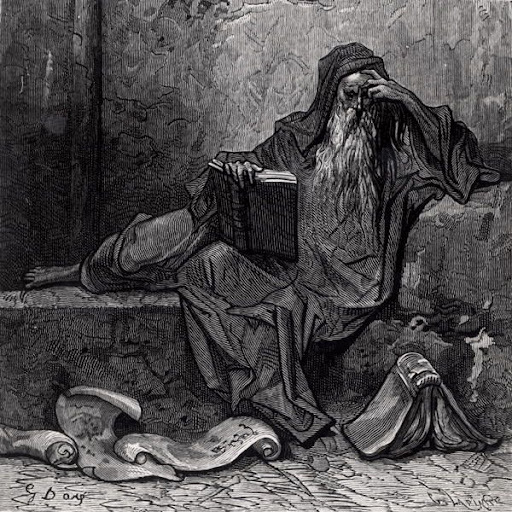
Built of successive additions, the tale of Merlin was reproduced, synthetized and translated, partially or entirely, by all the literatures of Europe until the end of the Middle-Ages. Even before 1250, the “Merlin” of Robert had been translated in the provençal language. The character also appears within numerous French verse romans of the 13th century: in “Fergus” (which places his lair in an isolated mountain), within “Le Chevalier aux Deux Epées”, within the “Roman du Hem”, within “Escanor”, within the “Roman de Silence” (where the Grisandole tale is found), and especially within “Claris et Laris”, which explains Merlin’s solitude by a crime he needs to expiate until his death. In the Prose Tristan (after 1240, Merlin takes care of Tristan, whose mother recently died, and gives him to a preceptor (just like he had done for Arthur in Robert de Boron’s text). Identified as a wizard, he builds a magical boat, the “nef de la joie”, for the king of Northomberlande. Outside of the knight-tales, a fairytale in verse of the beginning of the 12th century, “Du villain qui devient riche et puis pauvre”, also known as the “Dit de Merlin-merlot”, confirms the role among the “folk people” of Merlin as an embodiment of the supernatural.
The one that Dante called the “buon incantatore” was very popular in Italy, especially in relation to the work of Joachim of Flore. Among his apocryphal works there is an “Expositio Sibyllae et Merlini”. The tradition of Merlin as a prophet was enriched by a huge book of “Prophecies”, which mixed political predictions, sermons, and fictional stories. It was written in French between 1276 and 1279 by Venetian, probably a Franciscan. In the beginning of the 14th century, the Florentine Paolino Pieri mixed in his “Storia di Merlini” a tale of Merlin’s youth and the Italian translation of a part of the “Prophecies”. In 1480, Venice saw published six volumes of the “Historia di Merlino”, a great part also made of these prophecies supposedly made by Merlin.
In England, the “Merlin” of Robert and the “Suite-Vulgate” were recapped in a verse work known as “Arthour and Merlin” (1250-1300). Henri Lovelich gave an alternate version of this text in his “Merlin” (1430). A translation in Middle-English of the “Merlin-Vulgate” dates from the middle of the 15th century. Finally, sir Thomas Malory split the “Merlin” of Robert throughout the five first books of his “Morte d’Arthur”. This work, written in the prison of Newgate where Malory spent the last twenty years of his life, was printed in 1485 and constantly republished, and it ensured the fame of Arthur and Merlin within English-speaking countries.
In Germany, “Merlin und Seifrid de Ardemont”, by Albrecht von Scharfenberg (13th century) recaps Robert’s Merlin, with very important modifications (for example Pandragon and Uter are now the sons of Merlin). Other translations appeared in Holland. In Spain, the cycle of the pseudo-Robert de Boron was translated in the 14th century by the brother Juan Vivas, while the “Demanda del Sancto Grial” included a “Baladro del sabio Merlin”, derived from the lost “Brait de Merlin”. A Castilian version appeared at Burgos in 1498, and then another was published in Seville in 1535.
#merlin#merlin the enchanter#arthuriana#arthurian myth#arthurian literature#arthurian legend#medieval literature
24 notes
·
View notes
Text
just watched a two hours documentary on Alienor of Aquitaine and the whole time I kept thinking about how perfect Katherine Hepburn played her in the lion in winter
5 notes
·
View notes
Text
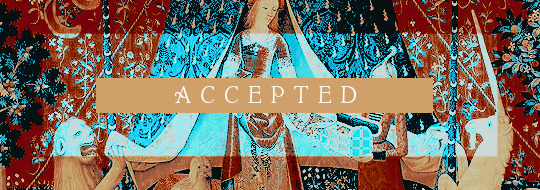
‘ 𝚃𝙷𝙰𝚃 𝙵𝙰𝙲𝙴 𝙾𝙵 𝚈𝙾𝚄𝚁𝚂 𝙸 𝙳𝙾 𝚁𝙴𝙼𝙴𝙼𝙱𝙴𝚁 𝚆𝙴𝙻𝙻 … ’ WELCOME TO FORTUNE'S WHEEL! the following roles and faceclaims have been accepted. please send in your account within forty-eight (48) hours to avoid your role being re-opened.
aaron cobham as felipe of spain. alessandra mastronardi as marie de guise. alessandro fella as henry of england. alperen duymaz as iskender sultan. aure atika as isabella of anjou. berk cankat as dragut. burak özçivit as sultan selim. fahriye evcen as gülsah sultan. gong jun as hans of denmark. gong li as empress xiaojing. john boyega as philip of austria. john david washington as emperor maximilian. lashana lynch as eleanor of portugal. leyla feray as gevherhan sultan. marina moschen as sophia of byzantium. mark rowley as edward of york. marlon teixeira as emperor theodore. matilda de angelis as katherine plantagenet. max irons as prince louis, duke of normandy. medalion rahimi as anna of france. merve boluğur as hurrem hatun. paul mescal as george of york. rebecca ferguson as alienor of aquitaine. rose williams as margaret plantagenet. sai bennett as anne of york. shannyn sossamon as matilda of flanders. trisha krishnan as damiata.
3 notes
·
View notes
Text
@alienored continued from x
The scarred flesh that roped across his countenance had long ceased to rankle, ridged and weathered although it appeared. Pricked by torchlight, and warmed by the tender slant of the Queen’s lips, Henry gladly received Alienòr’s embossing of wifely devotion to the cheek. He cast his gaze downward, turquoise eyes swimming in the dewy, half-melted gleam of rich tapers, amused by her remark. ‘But no one,’ sparred the King, absently drumming his fingers against the oak, glowing smoothly under his palm, ‘is as susceptible to women’s virtues than the current King.’ A snigger resonated within his chest; his chin rose to meet Alienòr’s trained gaze with a wry leer of his own. ‘Virtue, or its absence, shall we say?’ He cut her gaze with a sardonic grin, wavering between prosaic taunts and jovial repartee. In his thirst for opulence and finery, King Henry was more Frankish than otherwise – but in marrow and sinew he was formed from all the ascetic saints of England, who instilled in their scion a smarting repugnance for the French. This ancient discord had been fecundated by the Queen’s own quarrels with the late King, latched at Aquitaine’s bosom of wealth like a babe at its mother’s bitter teat.

‘In looks and in mannerism, I see.’ Henry’s dark brows made for his forehead, as raven-black as the tresses that spilled from the eldest Plantagenet’s milky crown. Katherine, his heiress; for all her fortitude, her steely, benign placidity, it at times deeply moved Henry to think that she was no longer the child, the nestling, weaving in and out of his legs, leaving no stone unturned in her boundless curiosity. Wiping the spectre of reminiscence from his countenance Henry remarked: ‘that her blood is Plantagenet is doubtless. Her maternity, on the other hand…’
He observed, with one brow arched haughtily over his eyes, as Alienòr’s deft, tapering fingers swiped his goblet from the table. Predictably, her mouth soured and curled with distaste at the bitter brew that lapped at her tongue. The King resisted a chuckle as she returned the drink to his keep. ‘Is my countenance so visibly infected with thought?’ He gently bade. The Queen’s mask of youth had fared far better than his –– as so, it seemed, did her poker face. Henry was, like most sovereigns assembled in Paris, allowing himself to be impressed by the worthy atmosphere of mirth and elation, seduced into pleasing snares and games of diplomacy held beneath canopies of gold and concord; but matters at home, as always, weighed ineluctably on the spirit. Woes that, in the present climate, denuded themselves like a serpent bathing on the Roman-tiled squares of the Hôtel Saint-Pol.
The King rose to his feet, ambling toward the smorgasbord to replenish his wife’s goblet. ‘It would seem –– I am as surprised as you –– that you mistook my cup as your own.’ He made to hand Alienòr her cup but not, without, ducking his head low to stamp his mouth against the golden part of her scalp; only with this benediction bestowed did he pass the cup into her hand, the sapphires worn on their fingers interlocked; the intimate transaction complete. ‘Whatever infects my mood, it is nothing that needs trouble my lady wife. You are the milk and honey of the summit, my disquiet is unworthy.’
Striding toward the hearth, Henry nurses his goblet aside its ardent flame. ‘And the Princesses? Are they much remarked for their learning and grace?’
0 notes
Text

Browsing the shelves at York City Library. Am happy to report that the section where the history books are kept is nice and peaceful!
The queens related to the Norman Conquest during the period 1066 to 1167 were:
Matilda of Flanders (William I 'the Conqueror)
Matilda of Scotland (1st wife of Henry I)
Adeliza of Lovain (2nd wife of Henry I)
Matilda of Boulogne (Stephen)
The Empress Maud (daughter of Henry I and wife of (i) Heinrich V Holy Roman Emperor & (ii) Geoffrey 'Plantagenet')
The queens of the Crusades during the period 1154 to 1291 were:
Eleanor of Aquitaine (Henry II)
Berengaria of Navarre (Richard I)
Isabella of Angouleme (John)
Alienor of Provence (Henry III)
Eleanor of Castile (Edward I)
CHECK OVERLAP BETWEEN 1154 & 1167.
1 note
·
View note
Photo

Berenguela of Castile + Blanche of Castile | Parallels
#berenguela of castile#blancha of castile#medieval kings#medieval queens#kingdom of castile#kingdom of france#house ivrea#house capet#ferdinand iii#louis ix#alfonso viii of castile#leonor plantagenet#alienor of aquitaine
134 notes
·
View notes
Text

I dream I hold the world, here, in my hands
#the devils crown 1978#the Devil’s crown#TDC 1978#Jane lapotaire#Brian Cox#Eleanor of Aquitaine#Alienor d’Aquitaine#Henry II of England#historical dramas#my art#12th century#medieval
43 notes
·
View notes
Text
Shout out to alienor of aquitaine who divorced her first husband, led a rebellion against the second, traveled through England at an old age, and died at the age of 82 during the middle ages.
2 notes
·
View notes
Text
My queen! :-) The trobador Bernart de Ventadorn referenced her, too, in his poems, for example in ‘Pel doutz chans que.l rossinhols fai’:
Domna, vostre sui e serai, Del vostre servizi garnitz. Vostr’ om sui juratz e plevitz , E vostre m’era des abans. E vos etz lo meus jois primers, E si seretz vos lo derrers, Tan com la vida m’er durans .
No sai coras mais vos veirai! Mas vau m’en iratz e maritz. Per vos me sui del rei partitz, E prec vos que no.m sia dans, Qu’e.us serai en cort prezenters Entre domnas e chavalers, Francs e doutz et umilians. Huguet, mos cortes messatgers Chantatz ma chanso volonters A la reina dels Normans.
translation by Ronnie Apter (1999): Lady, I am and will be yours, ready for your service. I am your man, sworn and pledged, and yours I was since before; and you are my first joy, and thus will you be the last, so long as life lasts me. I do not know when I shall see you again, but I go off among angry and married men. For your sake I have parted from the king, and I pray you that I may not be harmed when I am present in court before you, among ladies and knights, frank, and gentle, and humble. Hugh, my courteous messenger, sing my song willingly to the queen of the Normans.




Were diu werlt alle min
If the world were all mine
von dem mere unze an den Rin,
from the sea up to the Rhine,
des wolt ih mih darben
this I would willingly forego
daz diu chunegin von Engellant
to have the queen of England
lege an minen armen.
lie in my arms.
(12th century German troubadour song thought to refer to Eleanor of Aquitaine)
#eleanor of aquitaine#alienor d'aquitaine#bernart de ventadorn#trobador#troubadour#provencal#occitan médiéval#courtly love
35 notes
·
View notes
Photo






Favorite Historical Fiction || The Summer Queen by Elizabeth Chadwick ★★★★☆
When everyone had eaten and drunk their fill, Louis formally presented Alienor with the wedding gifts he had brought from France. There were books with ivory cover panels, reliquaries, boxes of precious stones, silver chalices, glass cups from the workshops of Tyre, tapis rugs, bolts of fine fabric. Boxes and chests and sacks. Alienor’s eyes ached at the largesse.
Louis presented her with a pectoral cross studded with rubies as red as small drops of blood. “This belonged to my grandmother,” he said as he fastened it around her neck and then stepped back, breathing swiftly.
“It is magnificent,” Alienor replied, which was the truth, even if she not particularly like the piece.
His expression had been anxious, but now he stood tall and proud. “You have given me the coronet of Aquitaine,” he said. ‘It would be a poor thing indeed if I could not gift my bride with the wealth of France in return.’
Alienor felt a frisson of resentment. Although she owed him homage as a vassal of France, Aquitaine belonged to her and always would no matter that he was to be invested with the ducal coronet after their wedding. At least the marriage contract stipulated that her lands were not to be absorbed into France but were to remain a separate duchy. “I have something for you also.” She beckoned, and a chamberlain stepped forward with a carved ivory box. Alienor carefully lifted her vase from its fleece lining. The dimpled rock crystal was cool against her fingers as she turned and presented it formally to Louis.
“My grandfather brought this back with him from a holy war in Spain,” she said. “It is of great antiquity.”
The vase looked austere and simple when set against the opulent gifts that Louis had given her, but the backdrop only added to its impact. Holding the piece in his hands, Louis kissed her brow. “It is like you,” he said, “clear and fine and unique.” He set it down gently on the table, and immediately a shower of coloured diamonds spangled the white cloth. Louis’s face filled with astonished delight. Alienor smiled to see his response and thought that while he had given her all these rich and heavy things, her gift to him of captured light surpassed them all.
36 notes
·
View notes
Photo






Aliénor - Episode 10: Impuissance
“Look at me, Henry! I have borne you sons, heirs to your kingdom that I built for you. You are nothing without me! And yet, you flaunt her as though she were your queen. You are a disgrace of a man. I may have loved you once, once when you were young Count Henry and I your Countess...now I see nothing but a fool of a man.”
“And yet I married a woman out of love, a woman of legend but now, I see nothing but a myth.”
The episode is set in 1174, Eleanor and Henry have been married for 23 years and she has recently been imprisoned for what will become 16 years. Henry has been flaunting his mistress, Rosamund Clifford (whom he began his liaison with in 1173). Around this time he contemplates a divorce from Eleanor, thus flaunting Rosamund in a attempt to provoke Eleanor into seeking an annulment, and who refuses to do so. This episode explores Eleanor and Henry’s relationship more deeply, examining the scars they have left one another with.
#Alienor#eleanor of aquitaine#my tv series#that i dream about#pls someone make this happen#help me#henry ii#plantagenet#royal#medieval#medieval period#british#jeremy irons#as henry ii#michelle fairley#as eleanor#period drama#perioddramaedit#historical#historical fancast#mine
27 notes
·
View notes